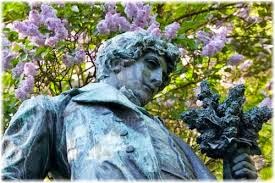THE
STORY OF CHANUKAH
 During the time of the 2nd Temple,
the Holy Land of Israel was ruled by cruel Syrian Greeks (at war with Rome). They
made it illegal for Jews to observe Judaism. They burned Torah scrolls and holy
books. They publicly executed big Rabbis if they refused to eat pork. They
placed pigs and idols in the Holy Temple. They went throughout Israel
and put idols in all the places of worship and forced the Jews to bow down to
them
During the time of the 2nd Temple,
the Holy Land of Israel was ruled by cruel Syrian Greeks (at war with Rome). They
made it illegal for Jews to observe Judaism. They burned Torah scrolls and holy
books. They publicly executed big Rabbis if they refused to eat pork. They
placed pigs and idols in the Holy Temple. They went throughout Israel
and put idols in all the places of worship and forced the Jews to bow down to
them
The First Miracle.
The Syrian Greeks, had one of the most
powerful armies in the world. But miraculously, the Jews rose up against them
and, led by the Maccabees, they won! The Chanukah lights remind us
that with the help of God, even a small group of dedicated fighters - fighting
for the right reasons -- can beat the most powerful armies in the world.
The Holy Temple had in it a Menorah - a
7 branched candelabra. Fire from olive oil burned 24 hours every day - to show
the continuous presence of God in the lives of the Jewish People. Only pure oil
could be used, and the Syrian Greeks had destroyed it. After winning the war,
the Jews needed to immediately re-dedicate The Holy Temple and light that fire.
("Chanukah" means "dedication.")
 The Jews were able to find one vial of
holy oil -- enough for one day. They lit it, and the one vial kept burning for
7 more days - enough time for more pure oil to be made. Another Miracle! In
that way, the light was rekindled and burned continuously once again -- showing
the return of the presence of God in the Holy Temple.
The Jews were able to find one vial of
holy oil -- enough for one day. They lit it, and the one vial kept burning for
7 more days - enough time for more pure oil to be made. Another Miracle! In
that way, the light was rekindled and burned continuously once again -- showing
the return of the presence of God in the Holy Temple. JOYOUS LIGHT!
Jews celebrate Chanukah by eating foods
cooked with oil (not good for you -- but good!), and by playing with a spinning
top called a "dreidel" that says a Great Miracle Happened There (In
Israel it says "Here"!). Most importantly, we celebrate by lighting
candles on each of the 8 days of the holiday. We start with one and by the 8th
day, the entire Menorah is alight. This shows that just as the Macabees started
with only one person, they inspired a whole nation to do the right thing. All of
us can inspire others to do good simply by lighting our single candle.
 We display our Menorah in prominent
windows in our homes to remind everyone that to dispel the darkness, all it
takes is one candle! This is the meaning of Chanukah.
We display our Menorah in prominent
windows in our homes to remind everyone that to dispel the darkness, all it
takes is one candle! This is the meaning of Chanukah.This article was written by Spanish interpreter, Norma R..











.jpg)
.jpg)
.jpg)
